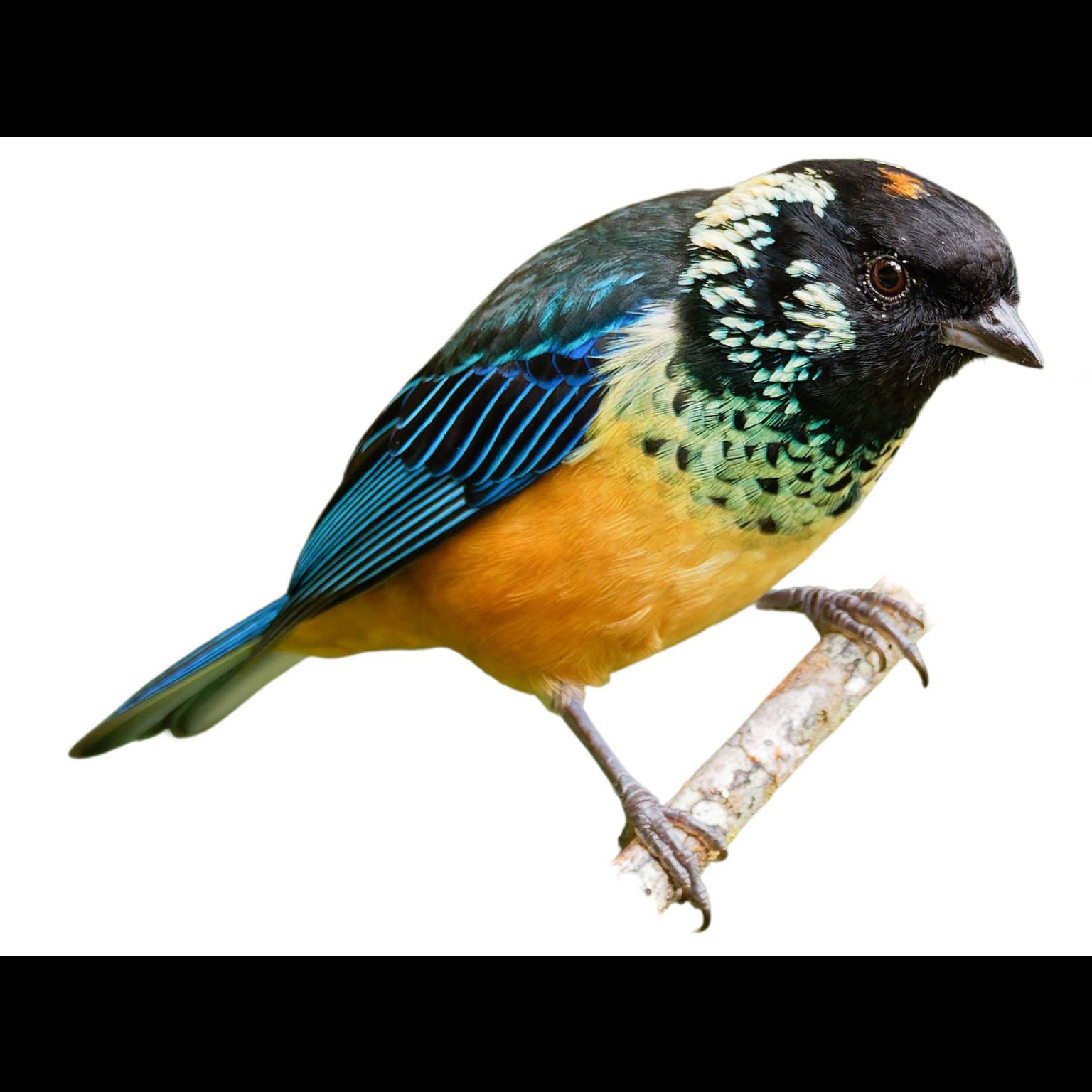
Spangle-cheeked Tanager
Tangara dowii
The Spangle-cheeked Tanager, known scientifically as Tangara dowii, is a medium-sized passerine bird, a vibrant denizen of the highland forests. It is distinguished by its predominantly black head, upperparts, and breast, adorned with blue scaling that graces the breast, sides of the face, and neck. A striking rufous crown patch sits atop its head, while the wings and tail boast blue edgings. The rump is a verdant green, and the belly, a warm cinnamon hue. Both sexes appear remarkably similar, though the adult male boasts a more extensive display of blue scaling. The immature birds present a duller appearance, lacking the crown patch and showing less pronounced blue scaling.
Identification Tips
When attempting to identify the Spangle-cheeked Tanager, look for the bird's black head with blue scaling and the distinctive rufous patch on the crown. The bird measures approximately 13 cm in length and weighs around 20 grams. The green rump and cinnamon belly are also key characteristics to note. Immature birds may be less colorful and lack the crown patch.
Habitat
This tanager favors the canopy of epiphyte-laden wet mountain forests, thriving at altitudes ranging from 1,200 to 3,000 meters. It can also be found in semi-open areas such as clearings with trees, second growth, and woodland edges.
Distribution
The Spangle-cheeked Tanager is an endemic resident breeder, found exclusively in the highlands of Costa Rica and western Panama.
Behaviour
These tanagers are social birds, often seen in pairs or family groups. They may also join mixed-species feeding flocks, particularly those that include common bush tanagers. Their foraging habits are quite active, and they are known to consume a variety of small fruits, insects, and spiders.
Song & Calls
The call of the Spangle-cheeked Tanager is a high-pitched 'tsip', a sound that punctuates the dense forest air where it resides.
Breeding
The Spangle-cheeked Tanager constructs a bulky cup nest, which is lined with bromeliad leaves and situated in a tree fork or on a branch high amongst the epiphytes. A typical clutch consists of two eggs.
Similar Species
Formerly considered conspecific with the Green-naped Tanager, the Spangle-cheeked Tanager has since been recognized as a distinct species due to geographical and genetic differences.
Diet and Feeding
The diet of the Spangle-cheeked Tanager primarily includes small fruits, which are usually swallowed whole, as well as insects and spiders that they forage for amongst the foliage.
Conservation status
The Spangle-cheeked Tanager is currently listed as Least Concern on the IUCN Red List, indicating that, for now, this species does not face any immediate threat of extinction.



























































